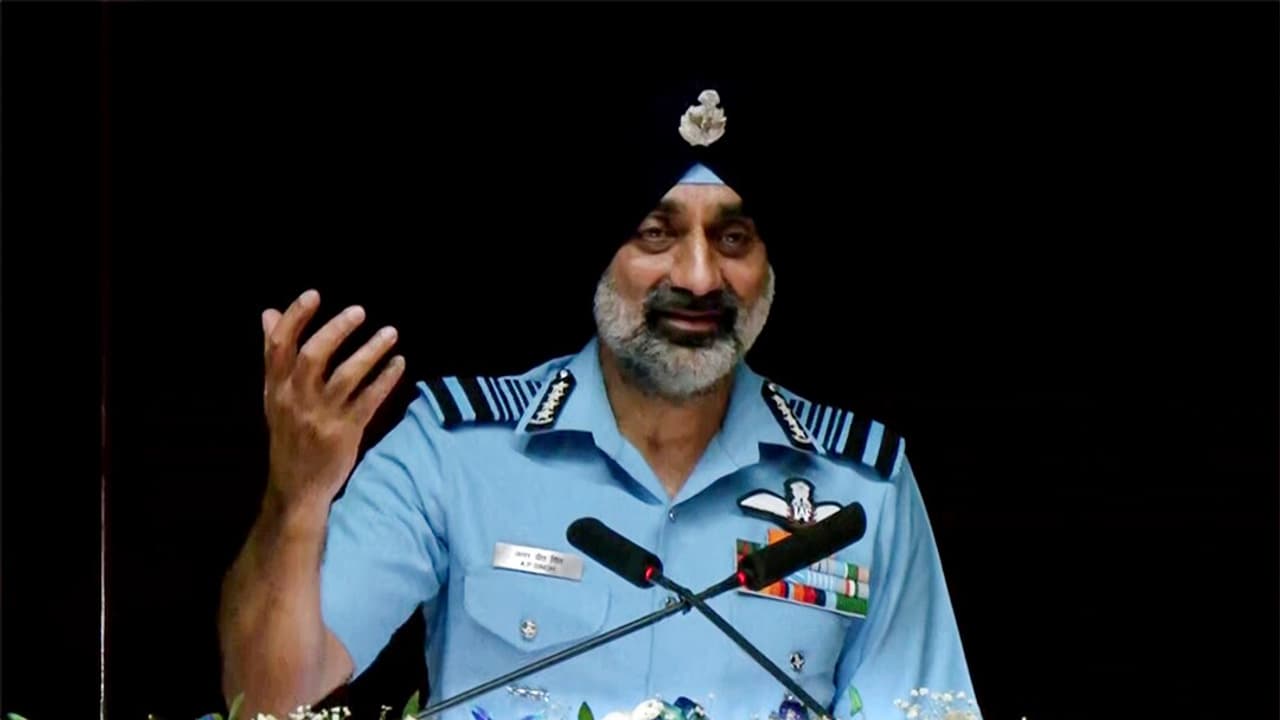IAF Chief ACM AP Singh has urged caution on creating theatre commands, warning against hasty restructuring that could undermine air power agility, decision-making efficiency, and operational flexibility.
Mhow: The Indian Air Force (IAF) has sounded a note of caution over the proposed establishment of theatre commands, stressing that the move should not be carried out in haste and only if it genuinely serves operational needs. IAF Chief Air Chief Marshal (ACM) AP Singh, speaking at the ‘Fire Side Chat’ during Ran Samvad 2025 on Tuesday, emphasized the importance of keeping decision-making streamlined and protecting the core strengths of each service.
“No Extra Layers Needed”
Laying out his concerns, ACM Singh made it clear that restructuring should not complicate existing mechanisms.
“As far as joint structures are concerned it should not add layers to the decision-making process. CDS played a very big role during Operation Sindoor were executed – he was orchestrating the whole thing among four of us. Just four of us (three Service chiefs and CDS) together and planning we did not find any gaps during the operation – everything sorted out. Therefore, I believe joint planning and execution at the apex level is what is required – because the direction go from there, things will fall in place. There is no need of another structure.”
“Disrupting Everything Is Not a Good Idea”
The IAF chief suggested an incremental approach rather than a drastic overhaul.
“Yes, we can start with this first and implement it to see how it pans out, if any more structure is needed, we can think about it but disrupting everything and making a new structure at this time, I don’t think is a very good idea,” he said.
ACM Singh also highlighted the dangers of blindly replicating foreign models of theatre commands.
“We can’t pick up from other countries like China or the US who have theatre commands. We need to think what we need otherwise we go wrong. We should not be under pressure that we need do it now – ‘aisa nahi karna hai’.”
Lessons From Operation Sindoor
Drawing from recent military experience, the IAF chief highlighted how the armed forces worked seamlessly during Operation Sindoor without the need for additional structures.
“When Operation Sindoor came in, I thought is the good example and we orchestrated things together. We heard that this was very short war – what happen in long war? Exactly the same will happen. We will be the same political leadership and we have to be in sync with the External Affairs Ministry and moreover, NSA played a big role across all services and was a big factor.”
Against Remote Command Structures
ACM Singh also rejected the idea of theatre commanders operating remotely, calling for stronger centralised coordination in Delhi.
“We can’t have theatre commanders sitting somewhere else and getting the directions on phone – really it doesn’t work. I personally feel that having joint planning, coordination and operation centre in Delhi is what we required – keeping it under CDS and thereafter centrally executing plans that will work out.”
IAF’s Core Concerns
In principle, the IAF has not opposed the idea of theatre commands. However, it has repeatedly raised serious concerns about their practical execution, particularly over safeguarding air power agility and maintaining doctrinal integrity.
One of the biggest sticking points remains the distribution of the IAF’s limited assets. Splitting up fighter squadrons, refuellers, and AWACS across region-based commands, the force argues, could significantly weaken operational effectiveness.
Instead, the IAF highlights its proven ability to redeploy assets across the country within just 48 hours — a strategic edge it fears could be compromised under a fragmented structure.
